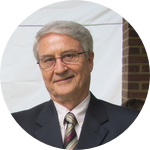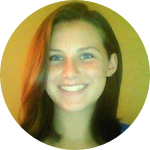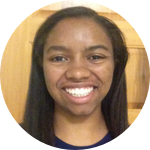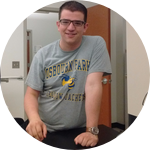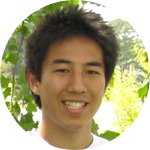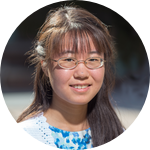About This Project
Synthetic biology studies the design of genetic circuits to program cells to solve problems in areas like medicine, energy, or agriculture. However, it is still difficult to fine-tune these circuits to best address their applications. We will create a toolbox of genetic parts which can change circuits' level of response, their sensitivity to input levels, and even the number of output states they display, providing greater precision and wider possibilities in genetic circuit design.
Ask the Scientists
Join The DiscussionWhat is the context of this research?
One of the main goals of synthetic biology is to create complex genetic circuits which allow us to program cells to behave in specific ways. These circuits are networks of genes which are connected to each other. However, each gene in the circuit has its own behaviors and tendencies, which make it difficult to precisely control the circuit as a whole.
This limits both the functionality and the reliability of genetic circuits. Imprecise circuits can lead to false positives, where the circuit activates when it is not supposed to. For a circuit in an immune cell engineered for cancer therapy, a false positive would be equivalent to an autoimmune disease for the patient. Clearly genetic circuits cannot be used in real-world applications until their safety and reliability are guaranteed.
What is the significance of this project?
This lack of control in genetic circuit design is one of the largest hurdles in synthetic biology's transition from proof-of-concept projects to real engineering applications. Our project will push the field closer to this goal by providing both the genetic tools which can improve these circuits, as well as a systematic guideline for scientists on how to use these tools. In addition, because the genetic parts in our toolbox work by connecting themselves onto the end of an already existing circuit, our toolbox will bring increased control and precision to genetic circuits designed for any application. This means that scientists will be able to improve pre-existing circuits without redesigning and rebuilding them, making our toolbox as widely applicable as possible.
What are the goals of the project?
Each of the parts in our toolbox will be a unique portion of a gene which can modify a circuit's behavior in a specific way. We will construct these toolbox parts, characterize their function inside living cells, and submit them to iGEM's open-access registry of synthetic biology parts for any future scientist to easily use.
In addition to creating the toolbox, we will also create a circuit control calculator which will use mathematical models and the data from our part characterization to inform the optimal use of our toolbox parts for a given application. The calculator will also provide predictions for the effect of additional parts that other researchers can add to the toolbox, so that our project can continue to enable scientific collaboration and progress long after its release.
Budget
In order to make our project a reality, we need to build a large number of genetic parts to fill our toolbox. The majority of our budget ($2,950 / $3,300) is dedicated to the construction and validation of these modular BioBrick components. The building process involves using PCR to amplify DNA (Oligo Synthesis, Q5 2x HiFi PCR Master Mix), using molecular cloning to convert amplified DNA into the iGEM format (Monarch Nucleic Acid Purification Kits, Restriction Enzymes, Gibson Master Mix), and confirming the success of our constructions by using DNA sequencing (Macrogen). The remaining $450 of our budget will be used for Flow Cytometry Calibration Beads which allow us to perform quantitative functional analysis on how our parts behave inside of a cell. In addition to informing our Circuit Control Calculator, this data will also be publicly available for anyone who wants to use, or contribute new parts, to our toolbox.
Endorsed by
Meet the Team
Affiliates
Affiliates
Affiliates
Affiliates
Affiliates
Affiliates
Affiliates
Affiliates
Affiliates
William and Mary iGEM
W&M iGEM is a team made up of nine undergraduate students in biology, physics, mathematics, and chemistry. Under the guidance of two faculty advisors and one alumni advisor from the departments of biology and applied science, our group is aiming to create a novel system for improved design of biological circuitry. With your support we will present our work amongst 300 other iGEM teams at the iGEM Giant Jamboree in Boston this Fall.
Likhitha Kolla
I am a rising junior pursuing Biology and Chemistry. I joined the team to work with students who approach a scientific challenge differently from the way I might so that I can develop a well rounded view of the gray area in STEM and think like a mathematician, physicist, computer scientist, biologist, and chemist all at once. I want to continue my synthetic biology journey into medical research, which is why the overlap between synthetic biology and biomedicine motivates me to push existing boundaries to build circuits that could for example design microbes that assist cell-based immunotherapy.
Adam Reiss
A junior at the College of William and Mary, I'm studying biology and the mathematical modeling of biological systems. I've been involved in computational research since the beginning of my sophomore year, and have moved into synthetic biology research with the 2016 William and Mary iGEM team. Having been interested in medicine from an early age, I have been involved with several volunteer fire departments as an Emergency Medical Technician for the past three years. I intend on going to medical school upon graduation, and am looking forward to my next few years of research.
Ethan Jones
I am a rising sophomore pursuing a B.S. in Biology and Computational & Applied Mathematics & Statistics. For as long as I can remember I've always wanted to be a scientist both because of my love of learning and because of my desire to change the world. I'm especially excited to work on iGem this summer because synthetic biology is a relatively young field and there is a lot that we don't know yet. Additionally synthetic biology is a field that has a lot of potential to change the future of medicine and the world at large. In my spare time I enjoy perusing local culture forums to consume and create various image and text based communications, as well as learning highly specific useless facts and playing tennis.
Callan Monette
I'm a rising sophomore hoping to major in Neuroscience and Computational & Applied Mathematics & Statistics. I've been in love with all things biology since elementary school, and my recent expedition into the synthetic biology field through iGEM has been incredibly exciting for me! As a part of the W&M iGEM team I've been able to gain valuable research experience while learning how to think about molecular biology in terms of complex systems and circuits. In the future, I have my heart set on working in the medical field in some way, whether it's practicing medicine or participating in biomedical research; I'm particularly interested in neurobiology and neurological disorders. In addition to the iGEM team, I'm also a part of W&M Dhamaal Bhangra, a dance team that specializes in the energetic bhangra dance native to northern India! I also enjoy swimming/diving, tutoring small children, and wandering through the Williamsburg farmers market in search of cute dogs.
Kalen Clifton
I am a rising junior studying biology and applied mathematics. The interdisciplinary nature of our project appeals to my desire to blend my interests. I believe the intersection of disciplines is a great source for innovation. I became interested in science and research at a young age. One of my childhood memories is of constructing a zoo for my dolls to attend, even doing the research to write placards for each animal exhibit. My continued interest in constructing and designing things has driven me to pursue a career in bioengineering. Eventually I see myself researching evolutionarily optimized biological structures so that their design can be replicated when engineering biological and non-biological structures. Outside of the lab, I spend my time tutoring elementary students, watching movies, and playing volleyball.
Joe Maniaci
I am a rising junior majoring in Computational & Applied Mathematics & Statistics. Last year I was a member of the 2015 W&M iGEM team. As we have a young team this year, I oversee the day-to-day wetlab operations and keep things running smoothly. I am excited for the future prospects of iGEM as an institution that embodies both creativity and scientific rigor at William & Mary.
John Marken
I am a rising senior majoring in Applied Mathematics. I am interested in the fundamental laws and principles governing biological systems and how they give rise to the emergence of complexity. Last year I was a member of the W&M iGEM team, performing the mathematical modeling and data analysis for the project. This year I am the team's designated student leader, working together with Joe's wetlab expertise to ensure the project's successful completion. After iGEM, I plan on applying to PhD programs in Systems and Synthetic Biology.
Christine Gao
I am a rising senior majoring in Biology and Computational Applied Mathematics & Statistics. I was a member of the 2014 W&M iGEM team, and rejoined this year because I enjoyed the creativity and engineering aspect of iGEM. Besides synthetic biology, my main interest is in immunology, and I hope to conduct research on tumor-immune interactions beyond W&M.
John Mitchell
I am a rising sophomore at the College of William & Mary where I am studying physics and mathematics. This year I am on the iGEM team where I am doing mathematics modeling and simulations. I hope that my work in iGEM will provide me with experience in a variety of STEM disciplines. After William & Mary, I hope to pursue a doctorate in theoretical physics.
Lab Notes
Nothing posted yet.
Additional Information
Follow us on Twitter @wmigem
Like us on Facebook @ WM iGEM 2016
Email us at igem@wm.edu
Project Backers
- 38Backers
- 100%Funded
- $3,305Total Donations
- $86.97Average Donation


